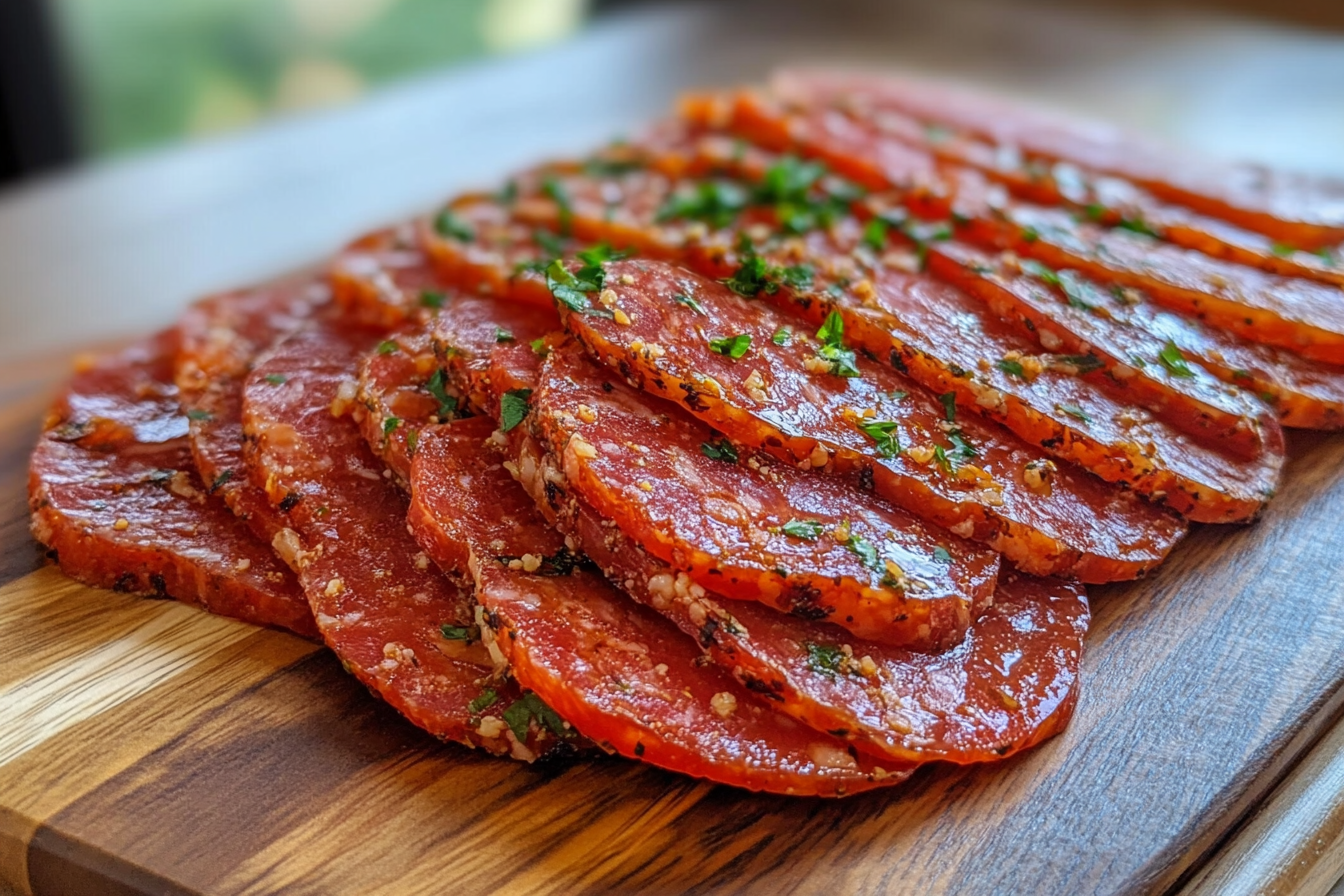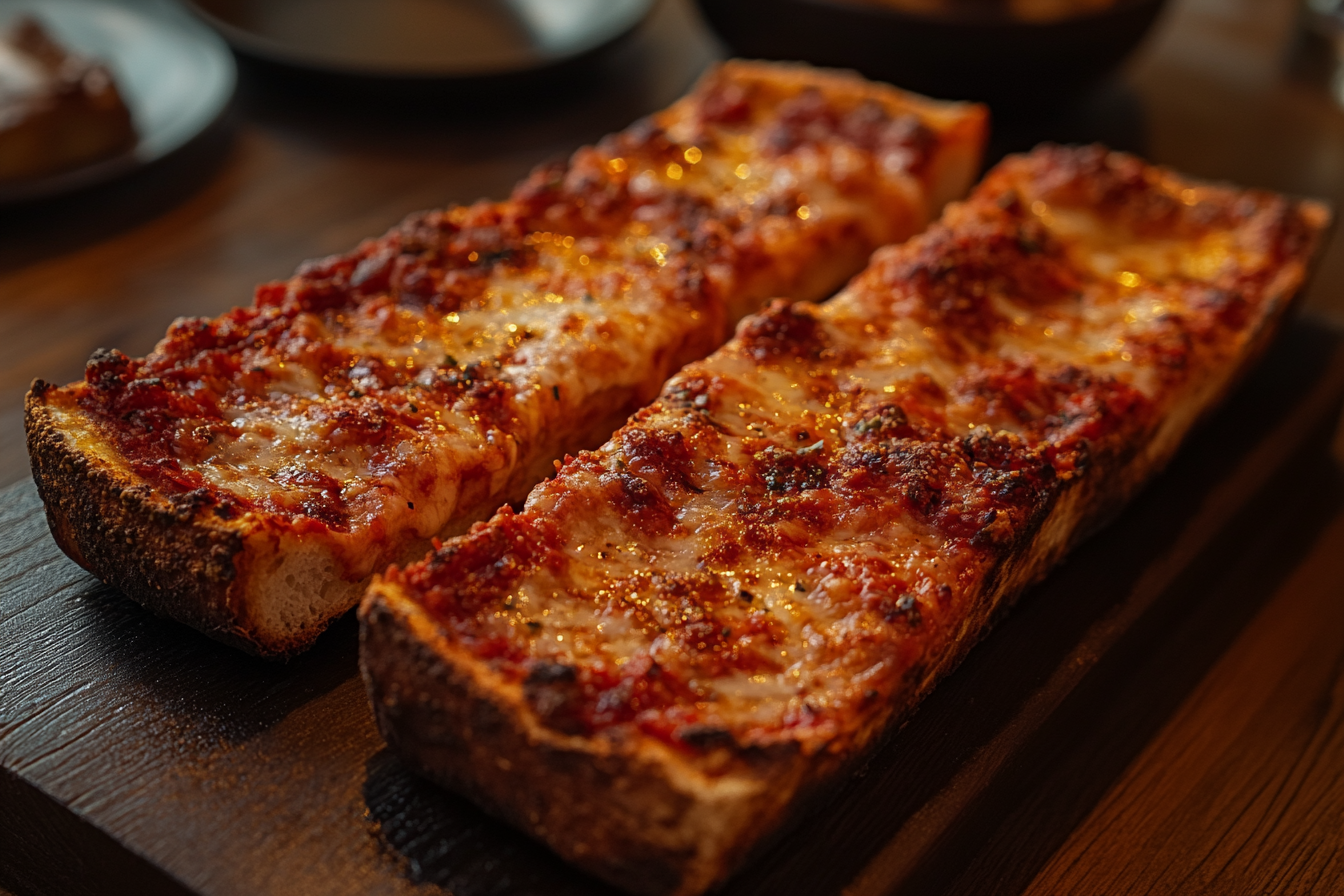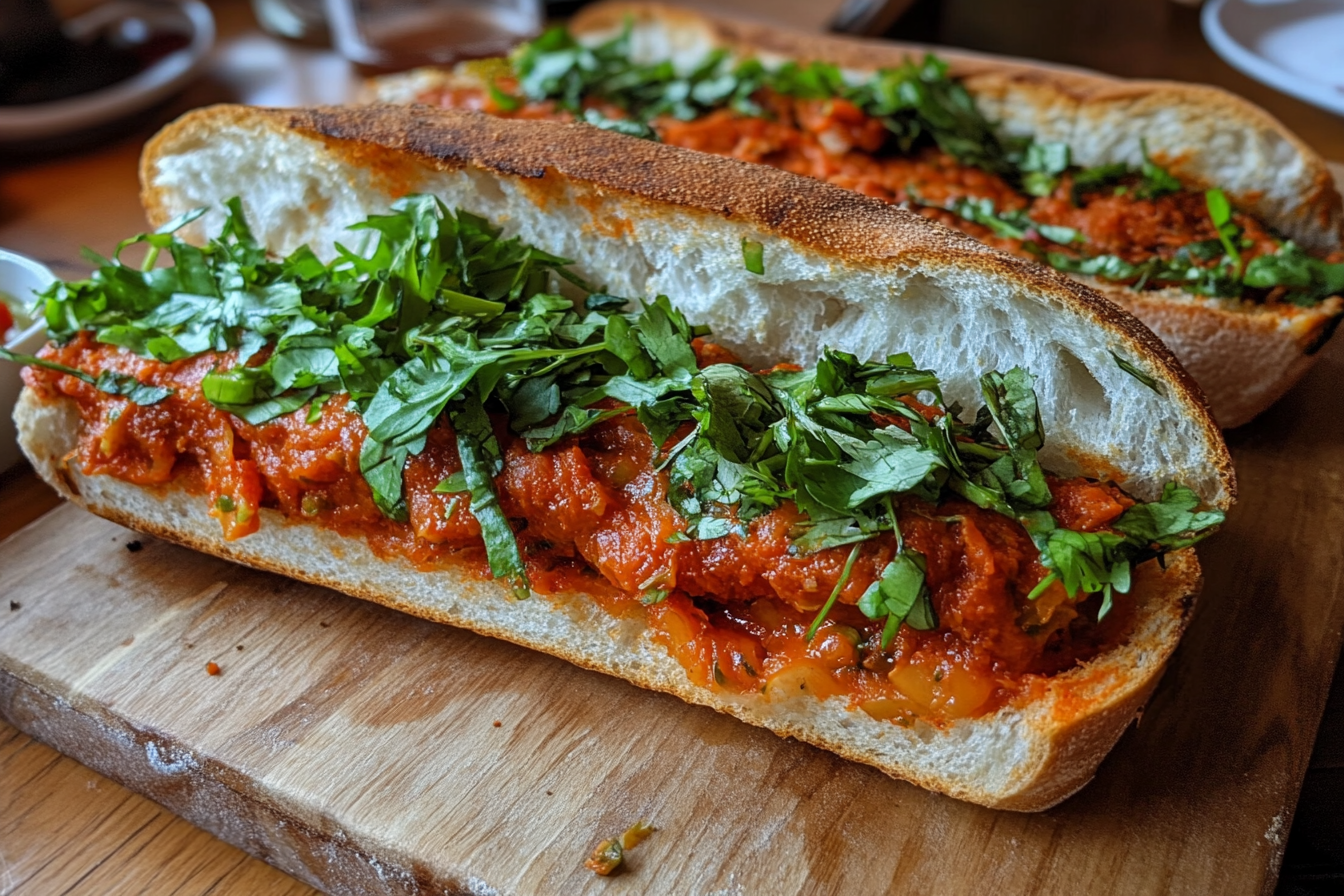‘Nduja is a bold and versatile sausage originating from the Calabria region in southern Italy. Its spreadable texture, fiery heat, and rich flavors make it stand out in the world of charcuterie. Made with a combination of quality meat, Calabrian chili peppers, and salt, ‘nduja has gained international recognition for its use in both traditional and modern dishes. Whether you’re a passionate foodie or a lover of Italian cuisine, ‘nduja is an essential ingredient to explore.
This guide dives deep into ‘nduja’s history, its production process, flavor profile, nutritional aspects, and the many ways you can incorporate it into your meals. Whether you’re considering buying it or making your own, this guide will tell you everything you need to know about ‘nduja.
The Rich History of ‘Nduja
The origins of ‘nduja lie in the small town of Spilinga in Calabria, a region that boasts a rich agricultural tradition and a love for spicy, flavorful cuisine. Southern Italy’s Calabria is well known for its fertile lands and vibrant food culture. The mountainous terrain and Mediterranean climate make it an ideal region for cultivating the fiery Calabrian chili pepper, a key ingredient in ‘nduja.
Historically, people considered ‘nduja a humble food. Local farmers often made it using the fattier, less desirable cuts of meat. To preserve the meat and enhance its flavor, the Calabrians blended it with a heavy dose of Calabrian chili peppers. The result was a spicy, spreadable sausage that could be stored and enjoyed over time.
Over the centuries, ‘nduja has evolved from a local specialty to a highly sought-after delicacy. Today, it’s celebrated not only in Calabria but around the world. The annual ‘nduja festival in Spilinga is a testament to its importance in Calabrian culture, drawing visitors from across the globe to taste and celebrate this spicy salume.
In recent years, ‘nduja has gained popularity in international culinary circles. Chefs worldwide have embraced its bold flavors, using it in creative and innovative ways. Its rise in popularity can also be attributed to the increasing interest in regional and artisanal foods. As people look for authentic, high-quality ingredients, ‘nduja stands out as a product that represents the rich traditions and flavors of southern Italy.
How ‘Nduja is Made
The production of ‘nduja is both an art and a science. At its core, producers make ‘nduj using a few simple ingredients: high-quality meat, Calabrian chili peppers, and salt. However, the process of blending and curing these ingredients is what gives ‘nduja its distinct flavor and texture.
Ingredients
The base of ‘nduja consists of rich, fatty cuts of meat, which give the sausage its creamy, spreadable texture. The high fat content is essential because it balances the heat of the Calabrian chili peppers and makes the sausage smooth enough to spread.
Calabrian chili peppers are the other key ingredient. These peppers impart their intense heat and vibrant red color to the sausage. Producers blend them generously into the meat mixture, giving ‘nduja its signature spiciness.
The Process
The process begins by finely mincing the selected cuts of meat and blending them with a high proportion of Calabrian chili peppers and salt. Once the ingredients are thoroughly combined, the mixture is stuffed into natural casings.
Smoking is the next critical step. Traditionally, producers smoke ‘nduja over a wood fire, which preserves the meat and adds a subtle smoky flavor to the sausage. The smoking process also gives ‘nduja its rich aroma and deepens its flavor profile.
After smoking, ‘nduja undergoes a fermentation process. Fermentation is what gives ‘ndujaa its distinctive tangy taste and long shelf life. During fermentation, beneficial bacteria convert the sugars in the meat into lactic acid, which not only helps preserve the sausage but also develops its complex flavors. The fermentation process can take several weeks, during which time the flavors of the sausage gradually mature and intensify.
Once the fermentation process completes, you can enjoy ‘ndujaa. People often store it for extended periods and typically keep it at room temperature in traditional kitchens.
If you’re interested in trying authentic ‘ndujaa, be sure to check out La Quercia Cured Meats for traditionally made products or browse the selection at Supermarket Italy, where a variety of ‘nduja options are available.
The Role of Calabrian Chili Peppers
Calabrian chili peppers are not just a source of heat they are integral to the flavor and identity of ‘nduja. These peppers grow in the sun-soaked fields of Calabria, where the warm Mediterranean climate encourages their fiery flavor. In addition to their heat, Calabrian peppers also bring a slight sweetness and smokiness, which balances the fattiness of the meat in ‘nduja.
These peppers are used throughout Calabrian cuisine, adding heat and flavor to many dishes. In ‘nduja, they take center stage. Producers blend the peppers in such large quantities that they define the color, texture, and taste of the sausage. Without the Calabrian chili, ‘ndujaa would lose its signature spicy punch.
The Bold Flavor Profile of ‘Nduja
The flavor of ‘nduja is bold, intense, and unapologetically spicy. However, it’s not just about the heat the richness of the fat and the complexity of the fermentation process create a layered, nuanced taste. Here’s what you can expect when you take a bite of ‘ndujaa:
- Spiciness: The heat from the Calabrian chili peppers is immediately noticeable. It’s a slow-building heat that lingers on the palate.
- Richness: The fat in ‘ndujaa creates a luxurious mouthfeel. The sausage spreads easily, almost like butter, and the richness of the fat helps to temper the spiciness of the peppers.
- Tanginess: The fermentation process adds a subtle tanginess to ‘ndujaa, which balances the richness of the fat and enhances the overall flavor profile.
- Umami: The combination of meat, fat, and fermentation packs ‘ndujaa with umami a savory, mouth-watering quality that makes it incredibly satisfying.
How ‘Nduja Enhances Dishes
One of the reasons ‘nduja has gained so much popularity is its versatility in cooking. The intense flavor can transform even the simplest dishes into something extraordinary. Here are some of the most popular ways to use ‘nduja:
- Bruschetta: Spread ‘nduja on toasted bread for a quick, flavorful appetizer. The heat of the sausage pairs beautifully with the crunch of the bread.
- Pasta: Stir ‘ndujaa into your favorite pasta sauce for an added layer of richness and spice. It works especially well in tomato-based sauces, where the acidity of the tomatoes complements the sausage’s heat.
- Pizza: Use ‘nduja as a pizza topping for a bold, spicy kick. It pairs well with a variety of toppings, including cheese, mushrooms, and olives.
- Seafood: Add ‘ndujaa to seafood dishes for a spicy, umami-rich twist. It’s particularly delicious with shellfish like mussels or clams.
- Eggs: Mix ‘nduja into scrambled eggs or add it to an omelet for a hearty, flavorful breakfast.
To explore more ways to experiment with bold and spicy ingredients, try pairing ‘ndujaa with dishes like this brisket sandwich, which complements the richness of ‘ndujaa with tender meat.
The Growing Popularity of ‘Nduja in Modern Cuisine
In recent years, ‘nduja has become a trendy ingredient in the culinary world. Chefs across the globe are using it to add depth and heat to a variety of dishes. One of the reasons for ‘nduja’s popularity is its ability to enhance flavors without overpowering other ingredients.
In fusion cuisine, ‘nduja is finding new and exciting uses. Chefs are experimenting with it in everything from burgers and sandwiches to tacos and stir-fries. Its ability to add both spice and umami makes it a versatile addition to international recipes.
Here are some examples of how chefs are incorporating ‘nduja into creative dishes:
- Tacos: Chefs are adding ‘nduja to tacos for a spicy twist on traditional Mexican flavors. The heat from the Calabrian chili peppers pairs well with fresh toppings like avocado and cilantro.
- Burgers: Mixing ‘nduja into burger patties gives them a rich, spicy flavor. The heat from the sausage cuts through the richness of the meat, creating a perfectly balanced bite.
- Stir-fries: In Asian-inspired dishes, ‘nduja adds a layer of umami and spice to stir-fries and noodles. It complements ingredients like soy sauce and sesame oil, creating a complex flavor profile.
Nutritional Benefits and Considerations
While ‘nduja is undeniably delicious, it’s also important to be mindful of its nutritional content. Here are some key points to keep in mind:
- Calories: Due to its high fat content, ‘nduja is relatively calorie-dense. It’s best enjoyed in moderation, especially if you’re watching your calorie intake.
- Protein: On the plus side, ‘nduja is rich in protein, making it a satisfying addition to meals.
- Probiotic Benefits: The fermentation process used to make ‘nduja means it contains beneficial bacteria that can aid digestion and promote gut health.
- Sodium: Like most cured meats, ‘ndujaa is high in sodium. Those with high blood pressure or other health concerns related to salt intake should be cautious when consuming it.
Frequently Asked Questions About ‘Nduja
- What is ‘nduja made of?
The producers use high-quality meat, Calabrian chili peppers, and salt to make ‘ndujaa. They blend, smoke, and ferment these ingredients to create the final product. - Is ‘nduja very spicy?
Yes, ‘ndujaa is known for its spiciness, thanks to the generous amount of Calabrian chili peppers. However, the richness of the fat helps balance the heat. - How should I store ‘nduja?
Once opened, keep ‘nduja refrigerated. It should be tightly sealed to maintain its freshness and can last for several weeks. - Can ‘nduja be eaten raw?
Yes, ‘ndujaa is a cured and fermented product, which means it’s safe to eat as-is. Many people enjoy spreading it on bread or mixing it into sauces without cooking it further. - What’s the best way to serve ‘nduja?
‘Nduja is incredibly versatile. You can spread it on toast, stir it into pasta, or use it as a pizza topping. It also pairs well with seafood, eggs, and cheese.
Making ‘Nduja at Home
For those who love a culinary challenge, making ‘ndujaa at home can be a rewarding project. While it requires patience, the end result is a delicious, personalized sausage spread that you can use in various dishes.
Ingredients:
- High-quality meat
- Fat (for texture)
- Calabrian chili peppers
- Salt
- Natural casings
Instructions:
- Grind the Meat and Fat: The first step is to grind the meat and fat together. This combination is key to creating the smooth, spreadable texture that makes ‘ndujaa so well-known.
- Mix in the Peppers and Salt: Add a generous amount of Calabrian chili peppers to the meat mixture, along with salt. The peppers provide the heat, while the salt helps with preservation.
- Stuff the Casings: After thoroughly mixing the ingredients, stuff the sausage mixture into natural casings.
- Smoke and Ferment: Traditionally, producers smoke ‘nduja over a wood fire and then leave it to ferment for several weeks. This step is crucial for developing the sausage’s unique flavor.
Conclusion: Why You Should Try ‘Nduja
‘Ndujaa offers a delightful balance of spice, richness, and umami. Its spreadable texture and bold flavor make it a versatile ingredient that can elevate a wide range of dishes, from pizza to pasta and beyond. Whether you’re looking to try something new or simply add a spicy kick to your favorite meals, ‘ndujaa is undoubtedly the perfect addition to your kitchen.
As more people explore regional Italian foods and embrace bold flavors, nduja continues to grow in popularity worldwide. It’s a taste of Calabria’s culinary heritage that brings excitement to every bite. Give ‘ndujaa a try you won’t be disappointed!



